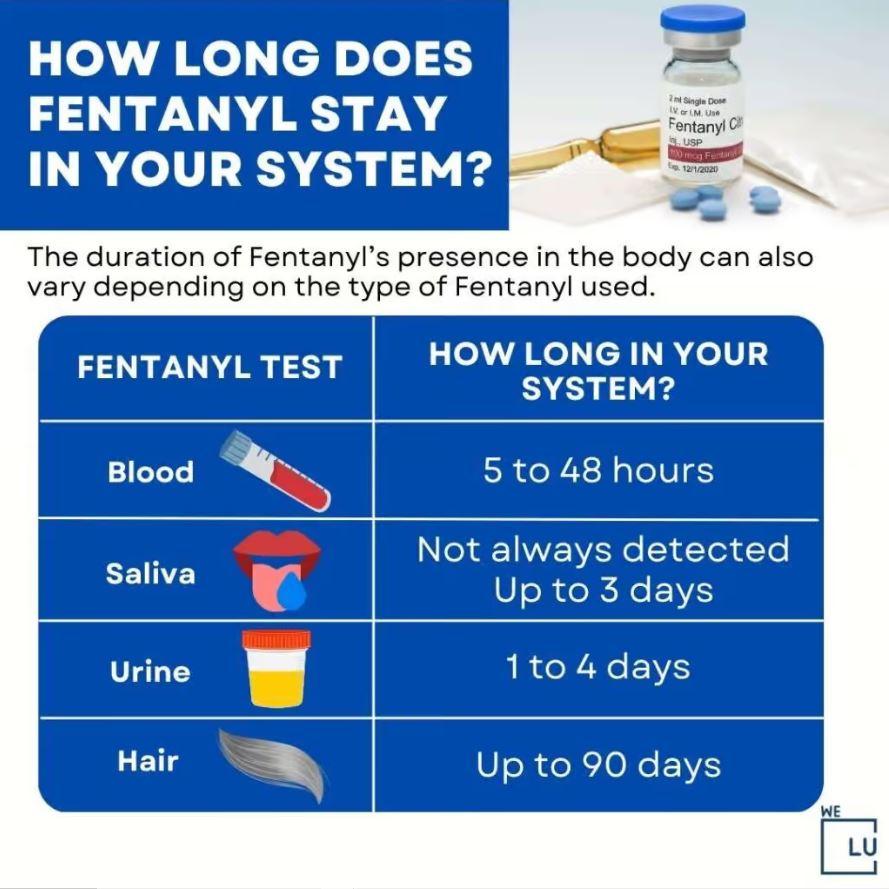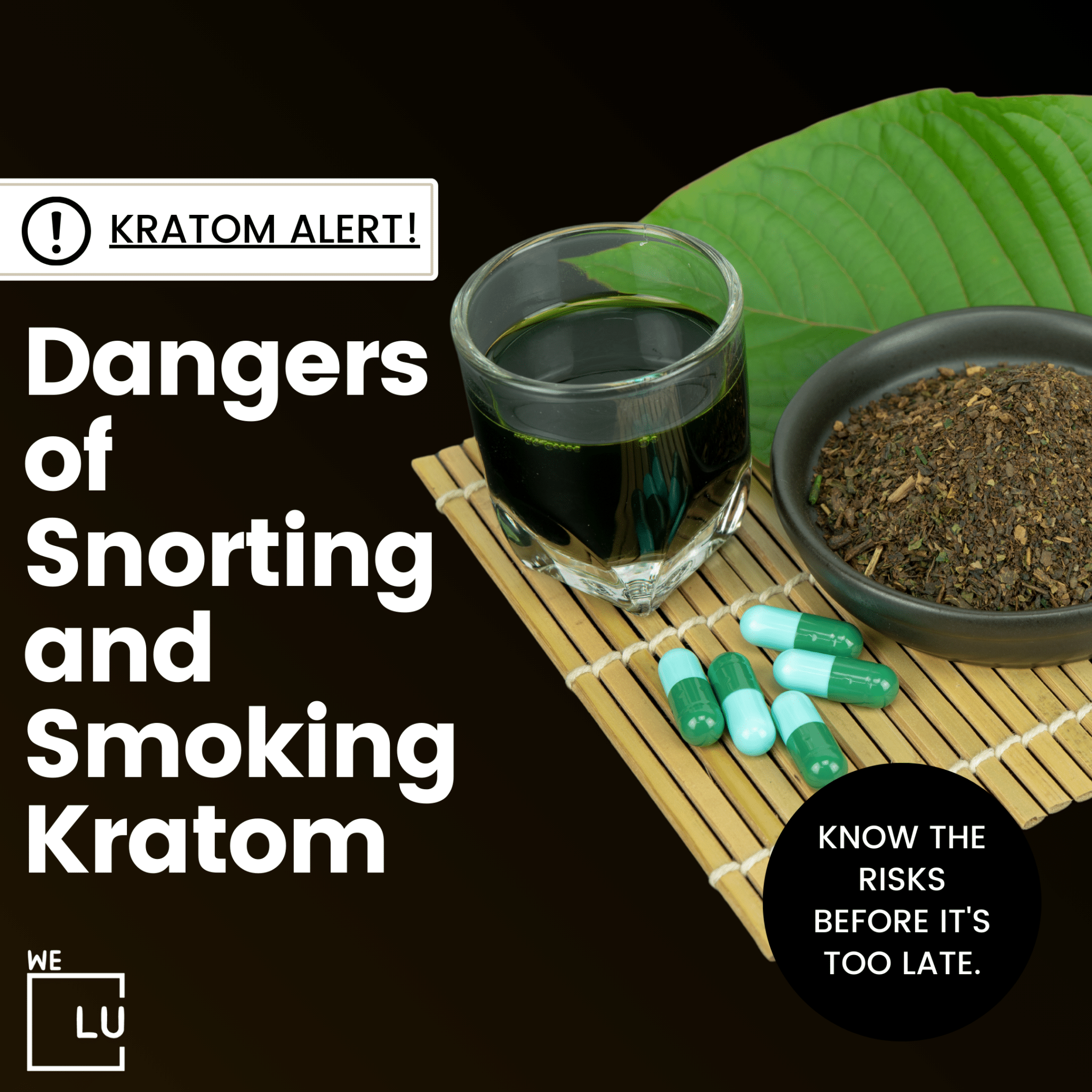Curious about fentanyl urine drug testing? If you’re wondering how long does fentanyl stay in urine, you’ve come to the right place. Fentanyl, a potent opioid, can be detected through fentanyl urine testing for a certain period after use. While it has legitimate medical uses, fentanyl has gained notoriety due to its association with a rising number of overdose deaths, often involving illicitly manufactured forms of the drug. Illicit fentanyl is sometimes mixed with other drugs, contributing to the opioid crisis. Let’s explore fentanyl urine drug testing and how long does fentanyl stay in urine.
How Long Does Fentanyl Stay In Your System?
The duration that fentanyl stays in the system can vary based on several factors, including individual metabolism, dosage, and the specific form of the drug (such as a patch or injection).
| Body System | Time in System |
|---|---|
| Blood | 5-48 hours |
| Hair | Up to 3 months |
| Saliva | Not consistently detected |
| Urine | 24-72 hours |
These are approximate ranges, and individual factors like metabolism, hydration, and overall health can influence how long fentanyl stays in the system. Additionally, drug tests may have different detection thresholds, affecting the accuracy of results.
- Blood: Fentanyl can typically be detected in blood for up to 12 hours after the last dose.
- Urine: In urine, fentanyl may be detectable for approximately 1 to 3 days, but this can vary.
- Saliva: Fentanyl can be detected in saliva for a shorter duration, usually up to 2 days.
- Hair: Hair follicle tests can potentially detect fentanyl for a more extended period, up to several months, as the drug becomes incorporated into the hair as it grows.
How Long Does Fentanyl Stay in Urine?
Fentanyl is typically detectable in urine for approximately 1 to 3 days after the last use. This timeframe can vary, and factors such as the individual’s health, hydration level, and the sensitivity of the drug test may influence the results.
Learn more about “how long does fentanyl stay in Urine” and “how long does fentanyl stay in your system”:
Are you concerned with or are you due for a Fentanyl urine test? Get help with substance abuse challenges like Fentanyl Addiction. Join others who trust We Level Up for substance abuse treatments. Call 24/7. Your call is free and confidential.
What is Fentanyl?
Fentanyl is a powerful synthetic opioid pain reliever. It is used medically for managing severe pain, especially in cases like surgery or cancer treatment. Fentanyl is much stronger than many other opioids, including morphine and heroin, and it comes with a higher risk of overdose. Fentanyl is sometimes illegally added to other drugs, contributing to the opioid crisis due to its potency and potential dangers.
How Does Fentanyl Work?
Fentanyl works by binding to the body’s opioid receptors, which are primarily found in the brain and spinal cord. These receptors are part of the body’s natural pain management system.
When fentanyl attaches to these receptors, it blocks the transmission of pain signals and alters the perception of pain. This action results in powerful pain relief. Fentanyl is particularly potent, and even small amounts can have a significant impact on pain. However, this potency also increases the risk of side effects, respiratory depression, and overdose, making it a medication that should be used with caution and under close medical supervision.
How Long Does Fentanyl Effects Last?
The duration of fentanyl’s effects can vary based on the administration method and individual factors. Here are general estimates for different forms of fentanyl:
- Intravenous (IV) Fentanyl: The effects of IV fentanyl are typically rapid but relatively short-lived. The onset is quick, usually within minutes, and the effects may last 30 to 60 minutes.
- Transdermal (Patch) Fentanyl: Fentanyl patches are designed for slow, continuous release over an extended period. The onset of effects is slower, typically taking several hours, but the duration can extend for up to 72 hours, depending on the specific patch and individual factors.
- Buccal or Sublingual Fentanyl (Lozenges): Fentanyl lozenges are absorbed through the mucous membranes. The onset is usually within 15-30 minutes, and the effects may last for a few hours.
As fentanyl is a potent opioid with a high risk of overdose, one should make sure to follow prescribed dosages and administration methods precisely. The duration of effects can also be influenced by individual factors such as metabolism, tolerance, and overall health. Always consult with a healthcare professional for personalized information and guidance on the use of fentanyl.

Skip To:
Learn More:
- Fentanyl Withdrawal, Timeline, Symptoms, Dangers, Medical Detox & Addiction
- How long does fentanyl stay in your system? Addiction, Drug Tests, Overdose & Treatment
- Fentanyl Overdose Symptoms, What Is Fentanyl? & Treatment
- Fentanyl Drug Addiction Treatment, Effects & Overdose
- Is Heroin A Narcotic? Opioids, Specifics, Street Names, Heroin Addiction, Overdose, Withdrawal & Treatment
- How Long Does Trazodone Last?

Get Your Life Back
Find Hope & Recovery. Get Safe Comfortable Detox, Addiction Rehab & Dual Diagnosis High-Quality Care.
Hotline (855) 695-1160
Half-Life of Fentanyl
The half-life of fentanyl, which represents the time it takes for half of the drug to be eliminated from the body, can vary based on factors such as individual metabolism and the specific form of fentanyl used. However, the average half-life of fentanyl is relatively short compared to some other opioids.
The half-life of intravenous (IV) fentanyl is approximately 7 hours, but it can range from 2 to 4 hours for some individuals. The duration may be different for other forms of administration, such as transdermal patches or lozenges.
While the half-life provides an estimate of the drug’s elimination, it may take several half-lives for a drug to be mostly cleared from the system. Additionally, individual variations can occur, and factors like liver function, kidney function, and overall health can influence the metabolism and elimination of fentanyl. Always follow medical guidance and dosing instructions when using fentanyl, and consult with a healthcare professional for personalized information.
Is Fentanyl Drug Tested For?
Yes, fentanyl is commonly included in drug testing panels. Drug tests for fentanyl are typically conducted to detect its presence in various biological samples, such as urine, blood, saliva, or hair. The specific type of drug test used can vary based on the purpose of the testing and the requirements of the testing program.
Fentanyl is a potent opioid analgesic, and its misuse, abuse, or accidental exposure can pose serious health risks, including overdose. Drug testing for fentanyl is often employed in different contexts, including:
- Clinical Settings: Healthcare providers may conduct drug tests to monitor patients receiving prescription fentanyl for pain management to ensure proper use and dosage.
- Forensic or Legal Settings: Drug testing for fentanyl is standard in legal and forensic settings, such as workplace drug testing, probation monitoring, or investigations related to substance abuse.
- Rehabilitation Programs: Individuals undergoing substance abuse treatment or rehabilitation may be subjected to drug tests to monitor compliance with treatment plans and detect the use of illicit substances, including fentanyl.
The inclusion of fentanyl in a drug test depends on the specific panel or test ordered. Standard drug tests may focus on common drugs of abuse, and additional testing may be required to detect opioids like fentanyl. If there are concerns about fentanyl use or potential exposure, it’s advisable to communicate openly with healthcare providers or testing authorities.
Fentanyl Drug Testing
Testing for fentanyl can be done using various methods, depending on the sample being analyzed. Here are common types of drug tests for fentanyl:
- Urine Test: This is the most common method for detecting fentanyl. The drug can be present in urine for approximately 1 to 3 days after use. Standard urine drug tests may not always detect fentanyl, so specific tests designed to identify synthetic opioids or extended panels may be required.
- Blood Test: Fentanyl can be detected in blood, typically within a few hours after use. The detection window in blood is shorter compared to urine, generally up to 12 hours.
- Saliva Test: Saliva tests can detect fentanyl for a shorter duration, usually up to 2 days after use. This type of test is less common but may be used in certain situations.
- Hair Follicle Test: Fentanyl can be detected in hair follicles for an extended period, potentially up to several months. This type of test is less common but provides a longer historical record of drug use.
Fentanyl Urine Testing
Testing for fentanyl in urine is a standard method used to detect the presence of the drug. Here’s how urine testing for fentanyl generally works:
- Urine Collection: A urine sample is collected from the individual undergoing testing. This is often done in a controlled environment to prevent tampering or adulteration of the specimen.
- Immunoassay Screening: The first step in urine testing is often an immunoassay screening. This is a preliminary test that uses antibodies to detect the presence of fentanyl or its metabolites. It provides a quick and cost-effective way to screen for the drug.
- Confirmation Testing: If the initial screening indicates the presence of fentanyl, a confirmation test is usually performed. This is typically a more specific test, such as gas chromatography-mass spectrometry (GC-MS) or liquid chromatography-mass spectrometry (LC-MS). Confirmation testing helps eliminate false positives and provides more accurate results.
- Detection Window: Fentanyl and its metabolites can typically be detected in urine for about 1 to 3 days after use. The detection window can vary based on factors such as the individual’s metabolism, the dose taken, and the specific testing method.
- Cut-off Levels: Urine drug tests have cut-off levels, the concentration thresholds used to determine whether a sample is positive or negative for the drug. If the concentration of fentanyl or its metabolites in the urine is below the cut-off level, the result is considered negative.
Get Help. Get Better. Get Your Life Back.
Searching for an Accredited Drug and Alcohol Rehab Centers in Near You?
Even if you have failed previously and relapsed, or are in the middle of a difficult crisis, we stand ready to support you. Our trusted behavioral health specialists will not give up on you. When you feel ready or just want someone to speak to about therapy alternatives to change your life call us. Even if we cannot assist you, we will lead you to wherever you can get support. There is no obligation. Call our hotline today.
FREE Addiction Hotline – Call 24/7Is Fentanyl Addictive?
Yes, fentanyl is highly addictive. It belongs to the opioid class of drugs, which are known for their potential to cause physical dependence and addiction. Fentanyl is particularly potent, estimated to be about 50 to 100 times more powerful than morphine and several times more potent than heroin.
Opioids, including fentanyl, work by binding to the brain’s opioid receptors, which are part of the body’s natural pain management system. While effectively relieving pain, they activate the brain’s reward system, leading to euphoria and well-being. This pleasurable effect can contribute to the development of addiction.
Repeated use of opioids can lead to the development of tolerance, where higher doses are needed to achieve the same effect, and physical dependence, where the body adapts to the presence of the drug. Individuals who are physically dependent on opioids may experience withdrawal symptoms when they try to reduce or stop using the drug.
The risk of addiction to fentanyl is a significant concern, and its potency increases the risk of overdose. Misuse or abuse of fentanyl, whether obtained illegally or even when used as prescribed, can lead to serious health consequences, including addiction, respiratory depression, and death. Healthcare providers must manage opioid prescriptions carefully, and individuals should use these medications only as directed by a qualified medical professional. If there are concerns about opioid use or addiction, seeking help from healthcare providers or addiction specialists is essential.

Comfortable Facilities & Amenities
High-Quality Addiction & Mental Health Rehabilitation Treatment
Rehab Centers TourRenowned California Addiction Center. Serene Private Facilities. Inpatient rehab programs vary.
Addiction Helpline (855) 695-1160Proven recovery success experience, backed by a Team w/ History of:
15+
Years of Unified Experience
100s
5-Star Reviews Across Our Centers
10K
Recovery Success Stories Across Our Network
- Low Patient to Therapist Ratio
- Onsite Medical Detox Center
- Comprehensive Dual-Diagnosis Treatment
- Complimentary Family & Alumni Programs
- Coaching, Recovery & Personal Development Events
Can You Get Fentanyl Withdrawals?
Yes, individuals who have been using fentanyl regularly, whether as prescribed by a healthcare provider or through illicit use, can experience withdrawal symptoms if they suddenly stop or significantly reduce their fentanyl intake. Fentanyl withdrawal is a result of the body adjusting to the absence of the drug, especially if physical dependence has developed.
Common withdrawal symptoms associated with fentanyl and other opioids include:
- Flu-like symptoms: These may include body aches, fever, chills, and sweating.
- Gastrointestinal Distress: Nausea, vomiting, diarrhea, and abdominal cramps are common.
- Agitation and Anxiety: Restlessness, irritability, and anxiety can be prominent.
- Insomnia: Difficulty sleeping or disturbances in sleep patterns.
- Muscle and Joint Pain: Aches and pains in the muscles and joints.
- Yawning and Runny Nose: These are often considered characteristic signs of opioid withdrawal.
- Dilated Pupils and Teary Eyes: Changes in the eyes are common during withdrawal.
Fentanyl withdrawal can be challenging, and the severity of symptoms can vary from person to person. Abruptly stopping fentanyl without proper medical guidance can be dangerous, and individuals should seek help from healthcare professionals or addiction specialists. Medical supervision during the withdrawal process, often called detoxification or detox, can help manage symptoms and increase the chances of a safer and more comfortable withdrawal experience. Additionally, individuals seeking to discontinue fentanyl use should work closely with healthcare providers to develop a comprehensive treatment plan that may include counseling, behavioral therapy, and support for ongoing recovery.
Learn more about Fentanyl Withdrawal:
World-class, Accredited, 5-Star Reviewed, Effective Addiction & Mental Health Programs. Complete Behavioral Health Inpatient Rehab, Detox plus Co-occuring Disorders Therapy.
CALL (855) 695-1160End the Addiction Pain. End the Emotional Rollercoaster. Get Your Life Back. Start Drug, Alcohol & Dual Diagnosis Mental Health Treatment Now. Get Free No-obligation Guidance by Substance Abuse Specialists Who Understand Addiction & Mental Health Recovery & Know How to Help.
Fentanyl Overdose
A fentanyl overdose occurs when an individual takes more fentanyl than their body can safely handle, leading to severe and potentially life-threatening symptoms. Fentanyl is a highly potent opioid, and its overdose risk is heightened due to its strength. Overdose can occur with both prescribed and illicit use of fentanyl.
Symptoms of a fentanyl overdose may include:
- Respiratory Depression: Slow, shallow, or stopped breathing is a hallmark sign of opioid overdose, including fentanyl.
- Extreme Drowsiness or Loss of Consciousness: Individuals may become unresponsive and difficult to awaken.
- Pinpoint Pupils: Constricted or very small pupils are a common sign of opioid overdose.
- Cold or Clammy Skin: The skin may feel cool or clammy to the touch.
- Blue or Purple Lips and Fingernails: A bluish or purplish tint to the lips and nails indicates a lack of oxygen.
- Weak Pulse: The heartbeat may become weak or irregular.
- Gastrointestinal Issues: Nausea and vomiting may occur.
Fentanyl overdoses can be rapid and require immediate medical attention. If an overdose is suspected, emergency medical services should be contacted immediately.
Treatment for fentanyl overdose may include:
- Naloxone Administration: Naloxone (Narcan) is an opioid receptor antagonist that can rapidly reverse the effects of opioid overdose, including fentanyl. It is administered as an injection or nasal spray.
- Supportive Care: In a medical setting, healthcare professionals may provide supportive care, including assisted ventilation and monitoring of vital signs.
Prompt intervention is crucial in fentanyl overdoses to prevent serious complications, including respiratory failure and death. Due to the potency of fentanyl, even small amounts can lead to overdose, making it essential to use the drug only as prescribed by a qualified healthcare provider. Additionally, individuals at risk of opioid overdose, such as those using illicit opioids, should have access to naloxone and be trained on its use to help save lives in emergencies.
Learn more about Fentanyl Overdose:
Experience Transformative Recovery at the We Level Up California Treatment Center.
See our authentic success stories. Get inspired. Get the help you deserve.



Start a New Life
Begin with a free call to an addiction & behavioral health treatment advisor. Learn more about our dual-diagnosis programs. The We Level Up treatment center network delivers recovery programs that vary by each treatment facility. Call to learn more.
- Personalized Care
- Caring Accountable Staff
- World-class Amenities
- Licensed & Accredited
- Renowned w/ 100s 5-Star Reviews
We’ll Call You
“This Was Not How I Wanted To Live,” Ryan’s Recovery From Fentanyl, Heroin, & Oxycontin Addiction
Search How Long Does Fentanyl Stay in Urine, Drug & Alcohol Rehab / Detox & Mental Health Topics & Resources
Sources
- Silverstein JH, Rieders MF, McMullin M, Schulman S, Zahl K. An analysis of the duration of fentanyl and its metabolites in urine and saliva. Anesth Analg. 1993 Mar;76(3):618-21. doi: 10.1213/00000539-199303000-00030. PMID: 8452277. related: how long does fentanyl stay in urine, fentanyl urine testing
- Fentanyl DrugFacts – National Institute on Drug Abuse (drugabuse.gov) related: how long does fentanyl stay in urine, fentanyl urine testing
- Fentanyl – U.S. Drug Enforcement Administration (DEA) (dea.gov) related: how long does fentanyl stay in urine, fentanyl urine testing
- U.S. Drug Enforcement Administration. (2017). Drugs of Abuse: A DEA Resource Guide. related: how long does fentanyl stay in urine, fentanyl urine testing
- Substance Abuse and Mental Health Services Administration. (2019). Key Substance Use and Mental Health Indicators in the United States: Results from the 2018 National Survey on Drug Use and Health. related: how long does fentanyl stay in urine, fentanyl urine testing
- National Institute on Drug Abuse. (2016). Fentanyl. related: how long does fentanyl stay in urine, fentanyl urine testing
- Drug Enforcement Administration. (2017). Drugs of Abuse. related: how long does fentanyl stay in urine, fentanyl urine testing
- U.S. National Library of Medicine, Medline. (2017). Drug Testing. related: how long does fentanyl stay in urine, fentanyl urine testing
- Schwartz J.G., Garriott J.C., Somerset J.S., Igler E.J., Rodriguez R., Orr M.D. (1994). Measurements of fentanyl and sufentanil in blood and urine after surgical application. Implication in detection of abuse. American Journal of Forensic Medicine and Pathology, 15(3), 236-41. related: how long does fentanyl stay in urine, fentanyl urine testing




